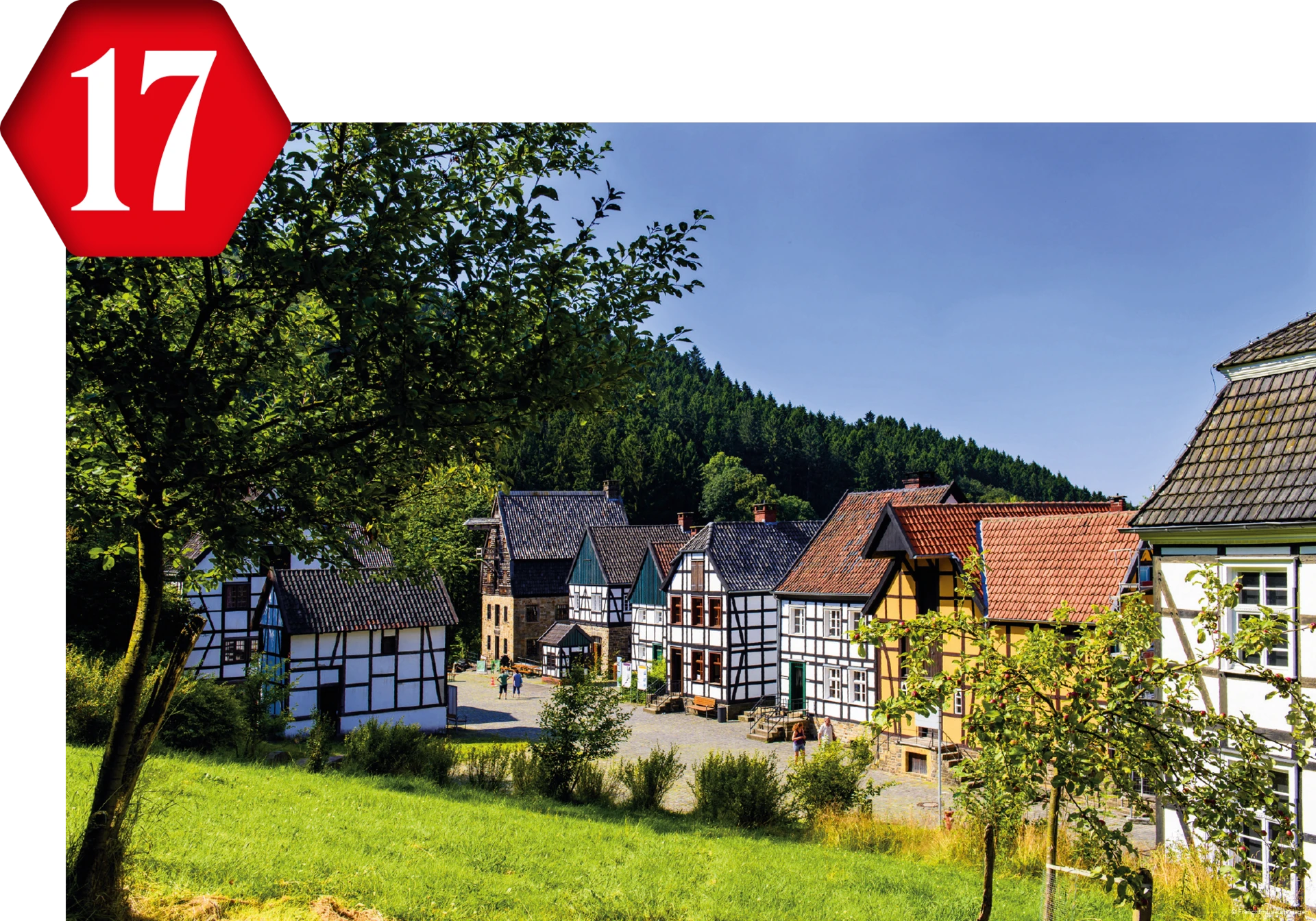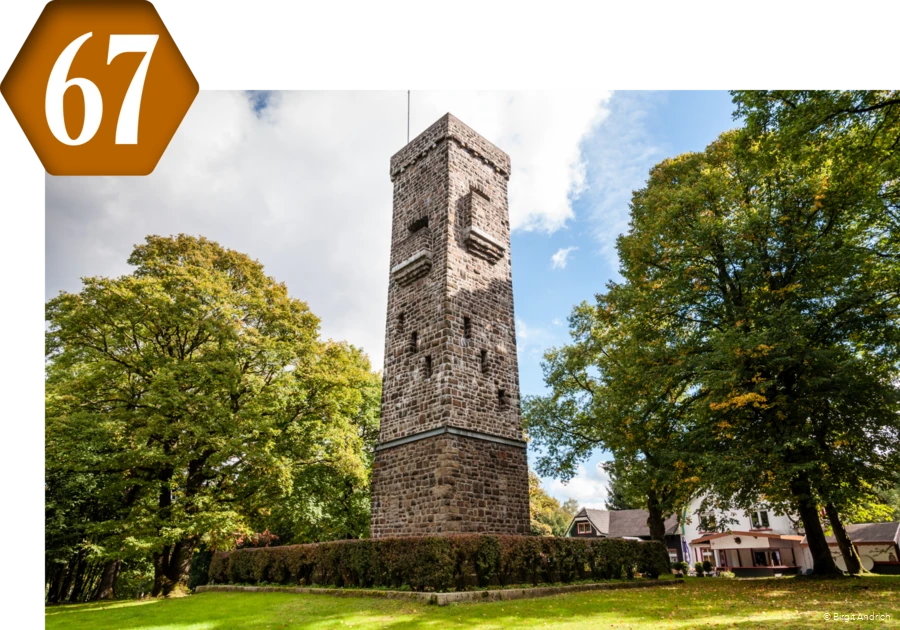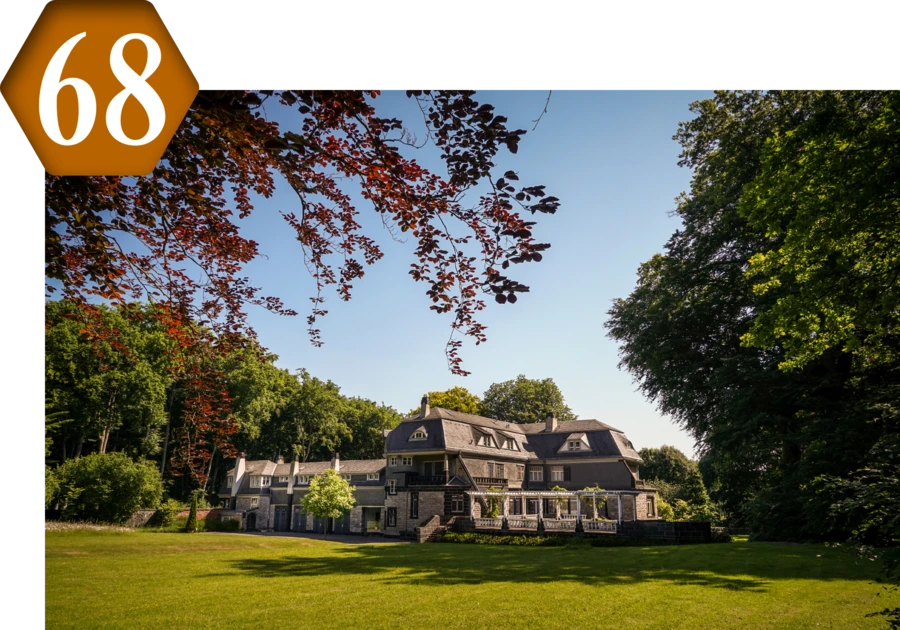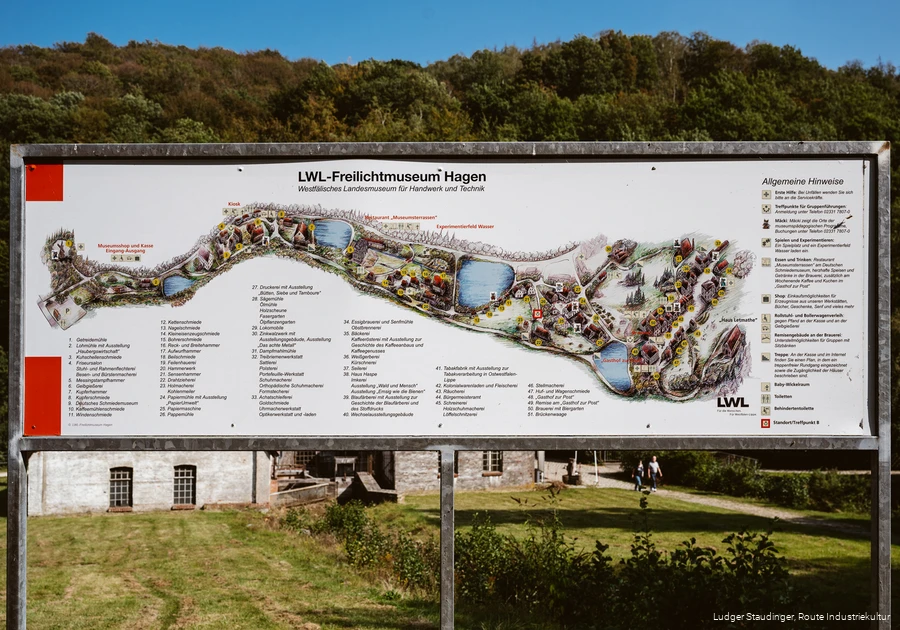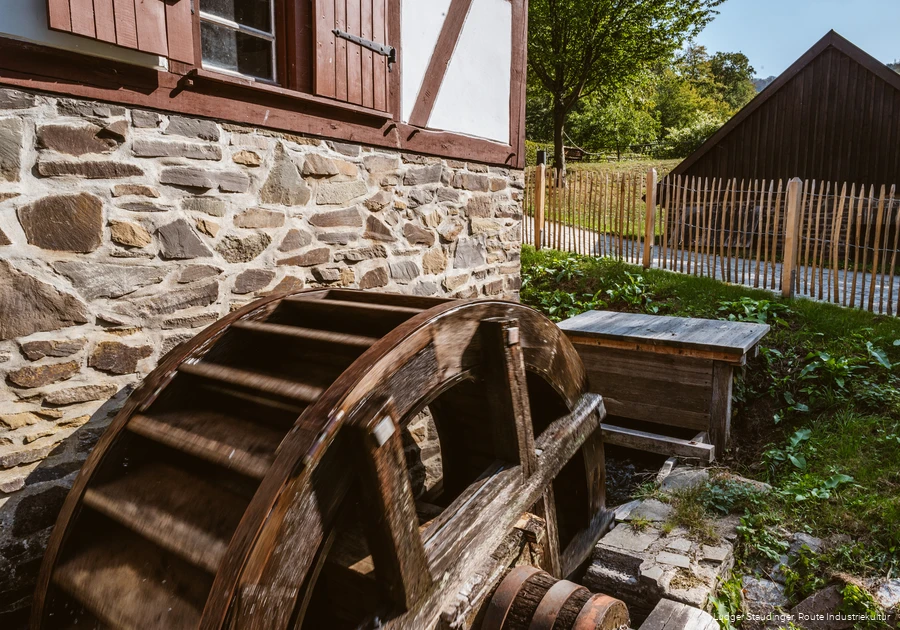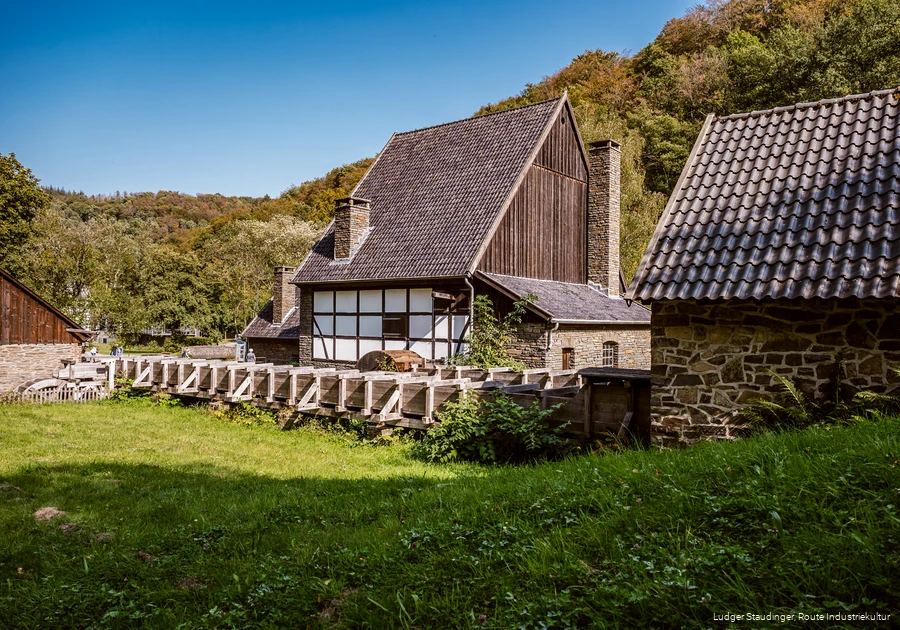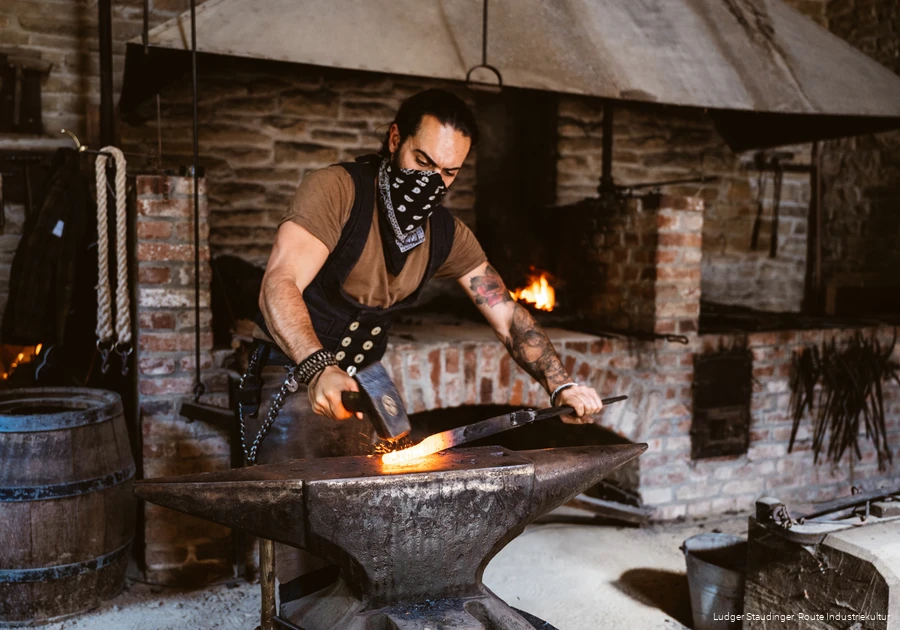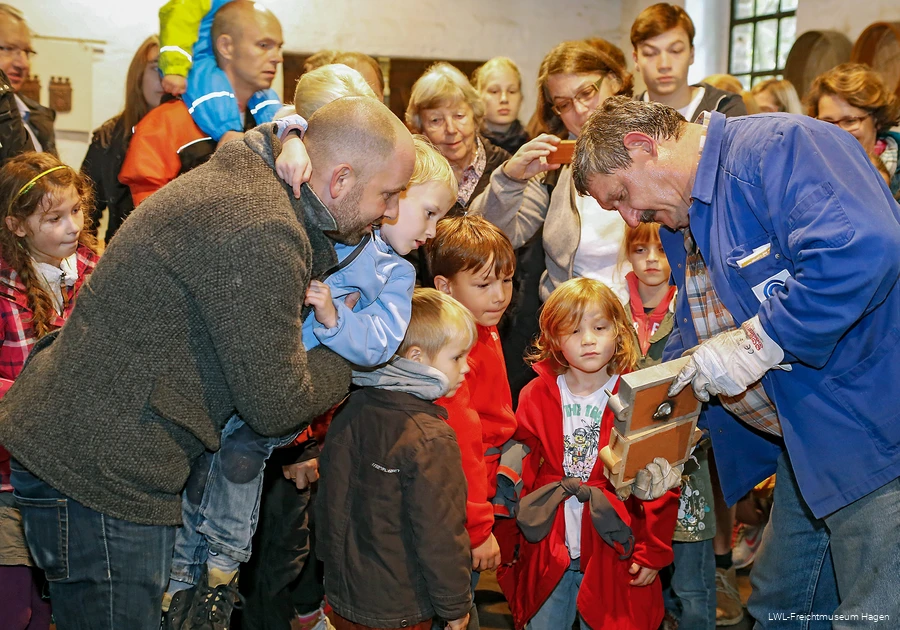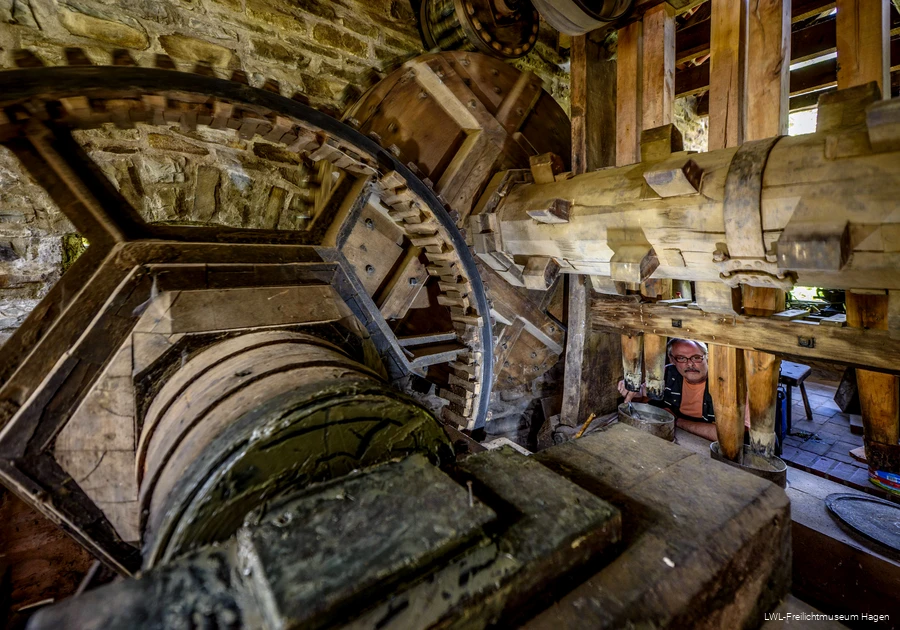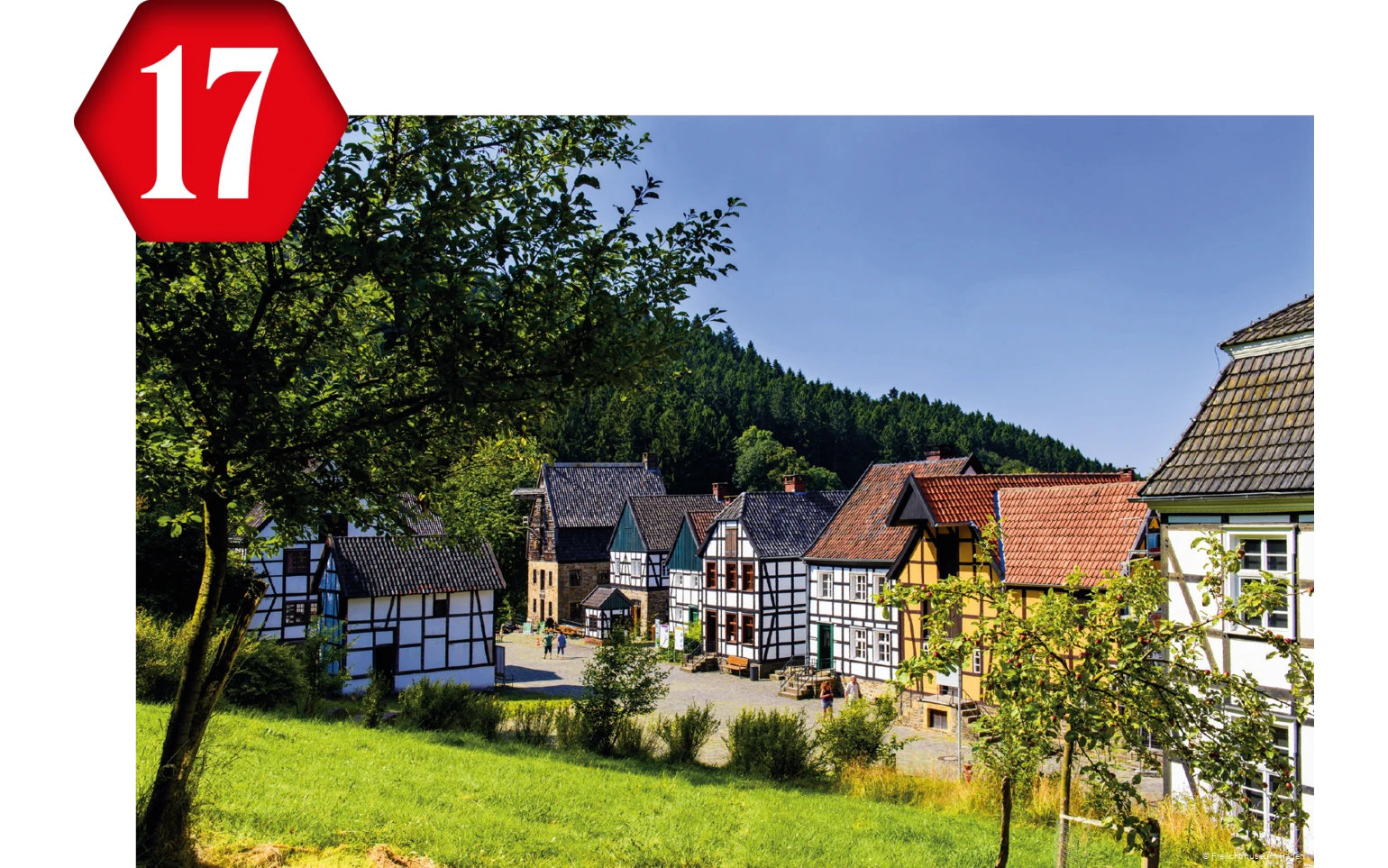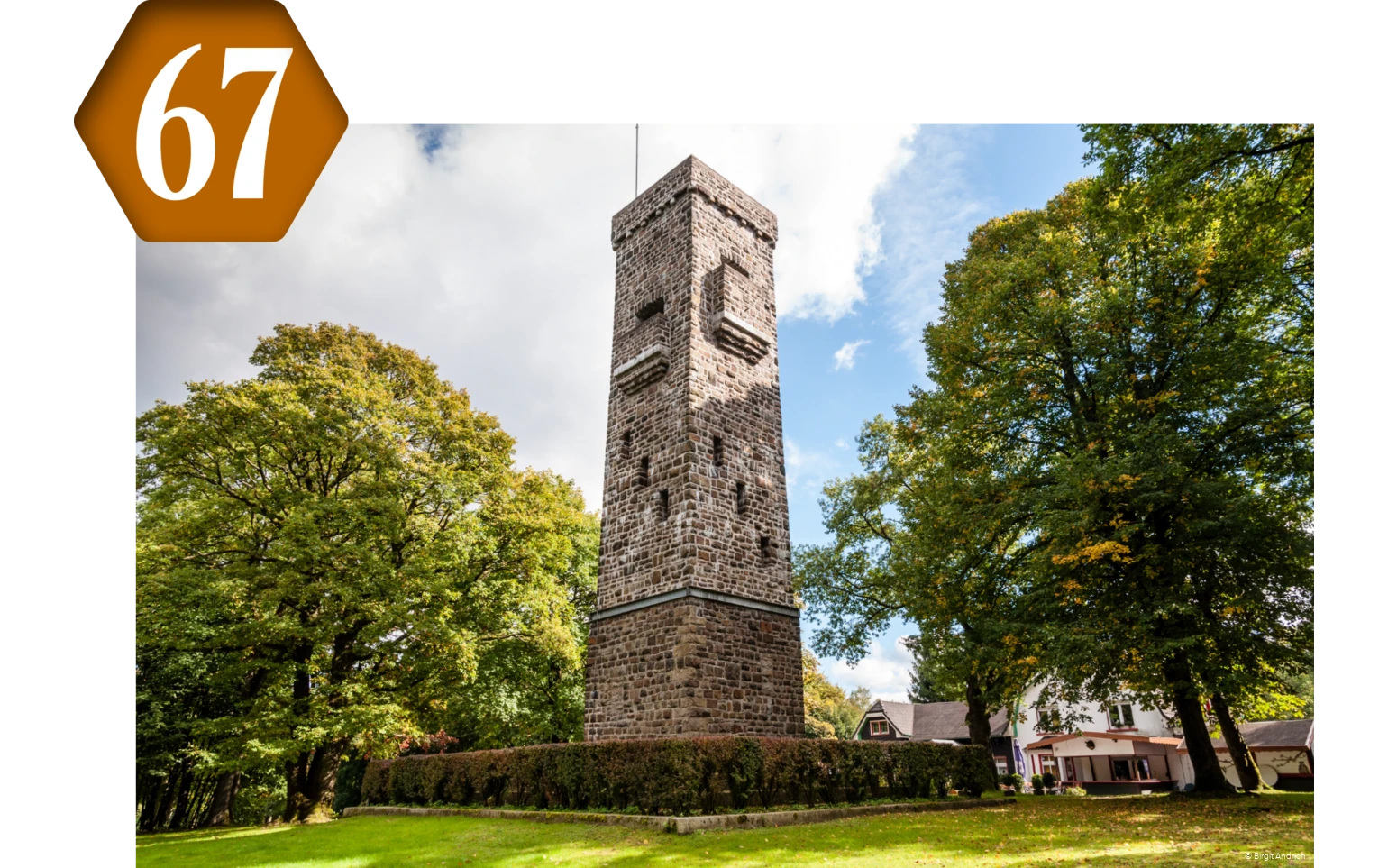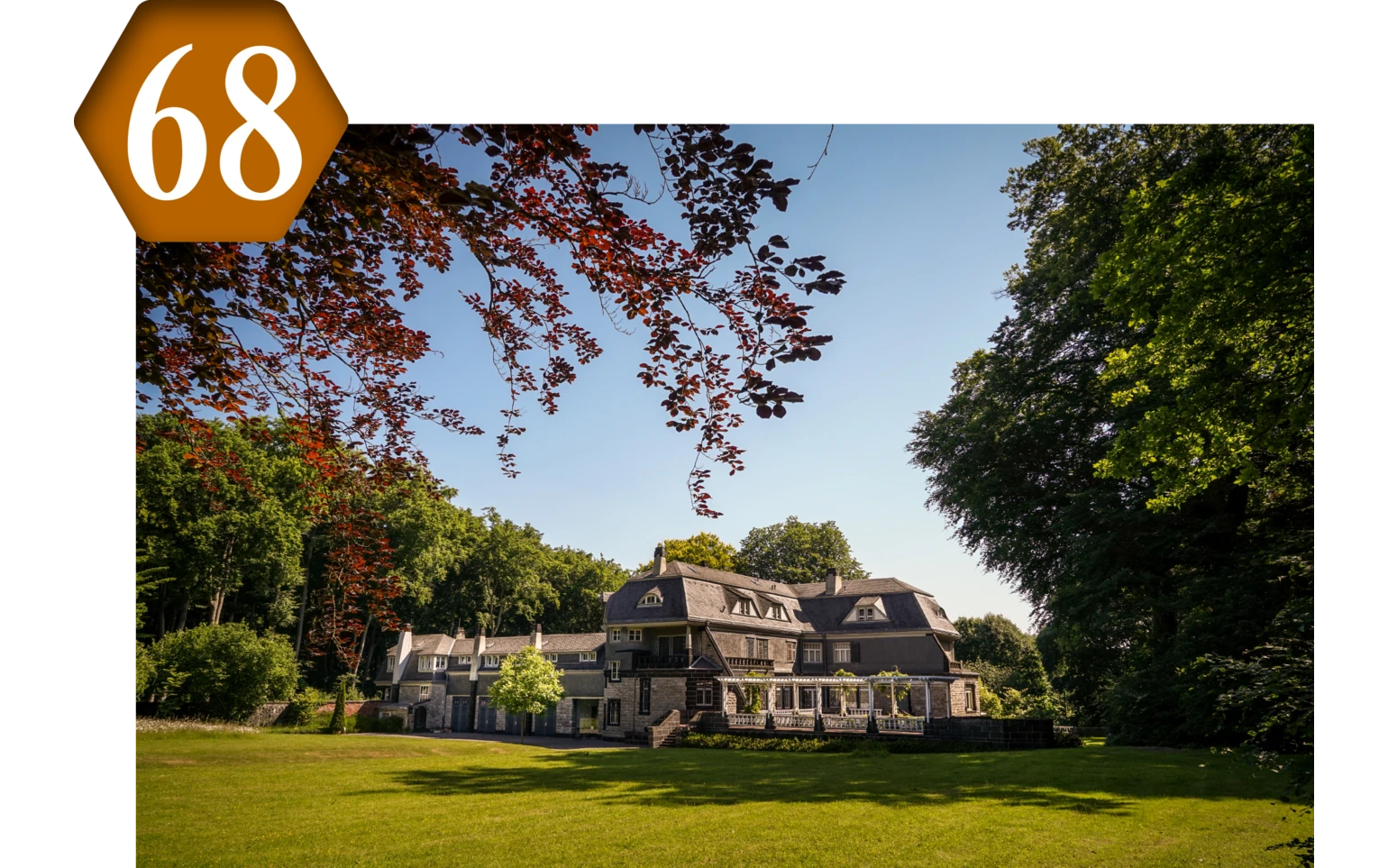The narrow Mäckingerbach valley offers the best conditions for the trades in the 18th and 19th centuries.
LWL-Freilichtmuseum Hagen
No drive without water! This also applies to pre- and early industrial technology in the Sauerland. Whether grain mill or fulling mill, grinding mill or wire reel, smelting works or hammer mill - the location is always the same: in the valley, on the water! The water wheels also turn in the open-air museum in the Mäckingerbach valley. This is what mechanical work looked like before the Ruhr coal replaced water power ...
- Infotext read more
-
… More than 60 historic workshops from all over Westphalia illustrate how industrialisation changed handicraft. Water-driven shafts and gears power forges, wire drawing plants and heavy hammers. Today, even without water power, the metal industry in southern Westphalia produces rows and rows of world market leaders, while the neighbouring Ruhr region is undergoing structural transformation.
Water has long been the benchmark for the industrial development of the Sauerland and is abundantly available thanks to the region's rugged terrain. In fact, countless production processes depend on water. This is particularly reflected in the specialised small-scale iron industry: forges working on hammers, anvils, hooves, wagons, scythes, chains, spades, winches, coffee mills, drills, files and nails can still be seen in action in the open-air museum in Hagen. It is evident that the driving technology is becoming increasingly complex and causing growing costs for construction and maintenance. For that reason wiredrawers often share a waterwheel that drives several drawing drums in a joint workshop.
This is precisely the situation in the wire drawing plant modelled on a traditional Altena factory. Two water-driven axle shafts run in trenches underneath three drawing benches. Cogwheels transmit the water power to a vertical spindle with a constantly rotating axle, which is connected to the drawing drum via a special "jaw clutch". The wire drawer controls the mechanism with a rocking foot handle: if he lowers the drum, it rotates; if he raises it, it stops. A multimedia display explains in detail how much experience is needed to ensure that the wire does not break if it is operated too jerkily.
Until about 1850, the small-scale iron industry in particular plays a major role in making the region more industrialised than the neighbouring Ruhr area. Since 1973, visitors come here for hands-on experience – by touching, watching and participating.
Steel Time Travel Destinations Nearby
The "Steel Time Travelers" Luise & Alfred: LWL-Freilichtmuseum Hagen
Al:
I've been to Hagen many times - but here it looks like the Sauerland. Narrow valleys, streams, mills ...
- Full dialog text
-
Al: I've been to Hagen many times - but here it looks like the Sauerland. Narrow valleys, streams, mills ...
Lu: The boundaries are truly fluid. And water is the driving force here! Without a gradient, no hammer falls or wheel turns.
Al: Good old days. There is no need for mountains anymore. The steam engine can be used anytime and anywhere. In summer, when the streams dry up, in winter, when everything freezes over.
Lu: So-so. And what do you drink in the Ruhr area? Isn't it also the case that your works are insatiable gulpers and steam doesn't come from nowhere?
Al: Now don't put everything on the gold scale. One hand washes the other - doesn't it? Railroads and coal save your factories and the trees in your forests.
Lu: At any rate, here you can take a look at how it all began: forge, mill, saw, ropemaking ... guild, origin, future ... In the Mäckingerbach Valley in Hagen, people will be talking about it for a long time to come.
Visitor information
Address:
Mäckingerbach
58091 Hagen
Phone. 02331/78070
www.lwl-freilichtmuseum-hagen.de
freilichtmuseum-hagen@lwl.org
Opening hours:
Tue-Sat/Holidays: 9 a.m. - 5.30 p.m. Sun: 9 a.m. - 6 p.m.
Open: 1 Apr - 31 Oct
![]()
![]()
![]()
![]()
![]()
Westphalian Open Air Museum of Technical Cultural Monuments (1982)
Brief description (film without sound)
In today's LWL open-air museum in Hagen, wind and water are the main energy sources for numerous historical workshops. The operation of a scythe hammer, which used to be in operation in Hagen-Haspel, can be seen.
